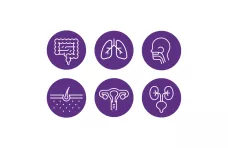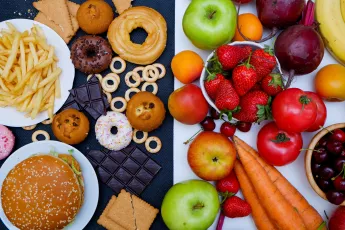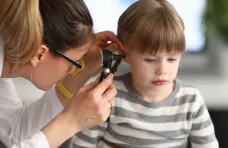France 2025: knowledge and behaviors about microbiota
The survey was conducted by Ipsos among 7,500 people in 11 countries (France, Portugal, Poland, Finland, Italy, Germany, United States, Mexico, Brazil China, and Vietnam).
The French and microbiotas: knowledge is progressing but behaviors still need to be improved!
Summarizing France's results in the survey
In France, although the term "microbiota" is better known than in other countries, the French could be more likely to adopt behaviors aimed at maintaining its balance. Healthcare professionals have a key role to play in providing information about the microbiota, good behaviors, and microbiota analyses.
1. French people have a higher general knowledge of microbiota
According to the survey, the French appear to have a better overall knowledge of the microbiota (88% say they have already heard of it), both compared to the European average (69%) and compared to global results (71%).
of French people have already heard of the intestinal microbiota.
(+19 points vs the European average)
of French people know that the microbiota is not located exclusively in the gut.
(+9 points vs 2024)
French people have already heard of the vaginal microbiota.
(+13 points vs the European average)
Despite better knowledge of the gut and vaginal microbiota, other microbiotas are less well known :
- 17% know the oral microbiota precisely (+3 points vs 2023, 20% overall)
- Only 15% know the urinary microbiota precisely (+5 points vs 2023, 16% overall)
- And 14% know the skin microbiota precisely (+2 points vs 2023, 18% overall).
Additionally, the French were less likely to make the link between health problems and the microbiota (42% vs. 52% overall).

Learn all about microbiota
Find out more!
2. Despite their knowledge, fewer French people than average have modified their behavior to promote a balanced microbiota
Less than half of them have changed their habits to improve the balance of their microbiota (45% versus 56% overall). Among them, only 9% say they have made significant changes. These results are slightly lower than those of the 2024 survey.
However, on certain best practices, they are among the most committed or close to average. Here are some examples:

The majority of French people say they eat a balanced and varied diet (84% vs. 83% overall).

They also report showering only once a day (80% vs. 47% overall), which is considered the habit most favorable to the skin microbiota.

The French say they limit processed foods (75% vs. 72% overall) to avoid the risk of microbiota imbalance.
However, there are still some habits that the French should adopt. For example, they consume fewer probiotics (33% compared to 50% globally) and prebiotics (25% compared to 44% globally) than the general global average.

What is the difference between prebiotics, probiotics and postbiotics?
Learn more
3. If the French trust their doctors, the latter could provide more advice to preserve the balance of their patients' microbiotas
Health professionals are considered by 85% of French people as the primary source of reliable information on the microbiota (+4 points vs 2024, 78% overall).

For 15% of French people, the first time they heard about the microbiota was through a health professional, just behind television (16%). The general practitioner (67%) and the pharmacist (28%) were the sources of information at higher rates than in other countries.
However, French doctors could provide more information to their patients about the microbiota and microbiota-related topics compared to European and global averages.
Only 12% of French people have been informed by their healthcare professional about what the microbiota is and its functions.
(vs 18% overall)
health professionals in France explain the good behaviors to adopt to maintain the balance of the microbiota.
(vs 2% overall)
Only 1 in 3 French people have received explanations from a healthcare professional about the negative impact of antibiotics on the microbiota.
(vs 39% overall)

Antibiotics: what impact on the microbiota and on our health?
Learn more
4. The French are generally reluctant but curious about microbiota testing
For this edition of the International Microbiota Observatory, the Institute partnered with Le French Gut to better understand what the French think about stool donation and microbiota testing. The results are revealing:
said they would be interested in taking a microbiota test
(vs 53% in Europe and 61% globally)
said they would be interested in testing their gut microbiota
(vs 83% in Europe and 80% globally)
believe this test would be useful to conduct a health check-up
(vs 60% overall)
Finally, almost half would be willing to donate their stool if it could contribute to advancing scientific knowledge in the fields of microbiota, nutrition and health (46% vs. 53% in Europe and 59% overall).
What is microbiota testing and mapping?
There are different types of microbiota testing, not only for the gut. Overall, they seek to identify microorganisms, such as bacteria and fungi, living in a specific part of the body to help inform health decisions and/or outcomes.
Intestinal microbiota testing, which seems to be the most common type of analysis, generally tests a person’s stool sample. For example, they could look for illness markers or extract DNA.
Both collective and individual gut microbiota analyses start with a stool sample. Microbiota mapping aggregates results from multiple microbiota tests to advance research and fight chronic diseases. Individual tests provide personal data on gut flora, with no definition of a clinically validated “healthy” or “pathological” microbiota. Thus, mapping fuels population-level knowledge, while testing gives a snapshot of one’s own microbiota.

Gut microbiota: still many things to be discovered
Learn more
Methodology
This third edition of the International Microbiota Observatory was conducted by Ipsos on 7,500 individuals across 11 countries (France, Portugal, Poland, Finland, Italy, Germany, the USA, Brazil, Mexico, China, and Vietnam). Two new countries were included in this edition: Italy and Germany.
The survey was conducted over the Internet between January 21 and February 28, 2025. For each country, the sample is representative of the population aged 18 and over in terms of :
- gender
- age
- profession
- region
Representativeness was ensured via quota sampling, the most commonly used sampling method for obtaining a representative sample of the population studied. The quota variables for each country were gender, age, region, and socio-professional category. The data were adjusted:
- within each country, again to ensure that each population is representative
- globally, so that each country has the same weight. Statistical analyses were carried out using Cosi software (M.L.I., France, 1994), with a significance level of 95%
The survey population was 48% male and 52% female. The average age was 47.3 years. The sample of 7,500 individuals made it possible to carry out a detailed analysis by age group:
- 18-24
- 25-34
- 35-44
- 45-59
- 60 and over
Changes from one year to the next have been measured on a like-for-like basis, i.e. calculated taking into account only those countries present in both the first and second editions of the survey. While we do have results for the new countries included in this third edition (Germany and Italy), they have not been taken into account when calculating trends, since they were not included in the first two editions of the survey.
The questionnaire includes 16 questions on:
- socio-demographic data
- the level of knowledge about microbiomes
- the level of and desire for information from healthcare professionals
- the identification and adoption of behaviors designed to combat microbiome imbalances
- the level of knowledge, information, and behaviors of women about the vulvo-vaginal microbiome
- health data
The questionnaire lasted ten minutes and the 7,500 individuals had to complete the entire questionnaire in order to be included in the survey. The terms used in the questionnaire to talk about the microbiome have been translated and adapted to the terms used in each country.



